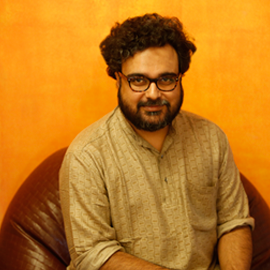Home truth: why Gujarat is a tougher challenge for Modi than UP

In 2014, the BJP registered a historic victory in Uttar Pradesh, winning 71 of the 80 Lok Sabha seats. Prime Minister Narendra Modi is set on repeating the performance in next year's assembly election. The BJP currently holds only about 10% seats in the 403-member assembly, but Modi and his lieutenants and working overtime to secure a two-thirds majority.
That won't be easy, not least because UP is not the only state demanding Modi's attention. He faces a greater challenge in his home state of Gujarat, the state whose "development model" is still his calling card and which, in the first place, catapulted him to the country's top job.
Also Read:After Patel agitation, Chinese newspaper questions 'Gujarat model of development'
Gujarat, an impenetrable citadel of the BJP for nearly two decades, is due for assembly election in late 2017. The party has ruled the state uninterrupted for 19 years, with Modi at the helm for over 12 of those years. Such was his hold that Modi and Gujarat came to symbolise each other in many ways. When he left Gandhinagar for Delhi in May 2014, he installed his confidant Anandiben Patel as his successor. His chief lieutenant, Amit Shah, he took along to Delhi to run the party on his behalf.
But in the absence of Modi and Shah, the BJP's strongest fort seems to be cracking. Those entrusted with the responsibility of guarding it have failed: agitating Patidars have laid siege to it on one side and there are disillusioned Adivasis on the other. Now, the Dalit community has sounded the bugle of revolt. If this wasn't worrying enough, there's infighting in the party and the government. All this is shaking the very foundations of Modi's model state.
Waning power
The entire premise of Modi's brand of politics revolves around the Gujarat Model. The BJP's strength in the state lies in keeping hold of its traditional votebank of upper caste Hindus and fracturing the once formidable KHAM alliance - Kshatriyas, Harijans, Adivasis, Muslims - of the Congress. Modi astutely enticed these groups away, especially the Harijans and the Adivasis. The impact was clearly evident in successive elections, which the BJP won without fuss.
In Modi's effort to win over the Adivasis and the Harijans, the RSS played a major role. The Sangh laid the groundwork through its anti-missionary tirade campaign, sowing the seeds of hardline Hindutva from which the BJP reaped electoral harvests. It was not a coincidence that the Adivasis were among the first to attack Muslims during the 2002 carnage, killing at least 40 people in one of the first massacres.
Also Read: Dalits in Gujarat turn the heat on cow vigilantes
The Patidars and the trader community have been the mainstays of the BJP's strength. They have long dominated both the state's business and politics. In fact, Modi counted them as his staunchest supporters during his tenure as the chief minister. It was their support that enabled Modi to relegate Muslims to political and electoral insignificance and win one election after another. To the world, it was presented as the triumph of his model of development and good governance; and it was the centrepiece of his 2014 election campaign.
Under siege
Now, the sheen is coming off the Gujarat Model. It would be a challenge to restore it, especially since Modi is no longer in Gandhinagar and the party is riven with infighting. Add the Patidar agitation and the ongoing Dalit unrest to this mix and the BJP's edifice appears just a spark away from being burnt down.
This begs the question: if the BJP is indeed losing ground, is the Congress gaining at its expense? Although the BJP has won every assembly election since 1995 in the state, the Congress has retained a healthy vote share. The leadership is still in the hands of Kshatriyas, and Muslims, by and large, are also with the party. Many other communities are now gravitating towards it as well; the party has started working among Dalits and Adivasis. It's said to be discreetly encouraging the various ongoing agitations.
The BJP needs a Modi to salvage the situation in Gujarat, but it does not have any leader who can step into his big shoes -- not the new Chief Minister Vijay Rupani or his deputy Nitin Patel.
Modi can't afford to see his Gujarat Model rejected through the ballot. For defeat in his home state would not only be a personal setback for the prime minister, it would be hard to explain to the country's voters in the 2019 Lok Sabha election. It is more than two years since Modi moved to Delhi, but he continues to operate the mooring line of the Gujarat boat. For how long this boat would remain afloat without a capable ferryman of its own is anybody's guess.
Also Read: #CongressSweepsRuralGujarat: BJP ends 2015 with a loss in Modi's own state
First published: 6 August 2016, 1:53 IST





![BJP's Kapil Mishra recreates Shankar Mahadevan’s ‘Breathless’ song to highlight Delhi pollution [WATCH] BJP's Kapil Mishra recreates Shankar Mahadevan’s ‘Breathless’ song to highlight Delhi pollution [WATCH]](https://images.catchnews.com/upload/2022/11/03/kapil-mishra_240884_300x172.png)

![Anupam Kher shares pictures of his toned body on 67th birthday [MUST SEE] Anupam Kher shares pictures of his toned body on 67th birthday [MUST SEE]](https://images.catchnews.com/upload/2022/03/07/Anupam_kher_231145_300x172.jpg)






